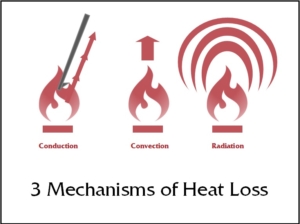Consumers today have unfortunately deemed an insulation’s R-value as the universal method of comparing one insulation to another. The higher the R-value the better. But, is this true? A clear way is needed to differentiate between an insulation that performs well for your home versus one with a good R-value.
R-values depict the rate at which the insulation stops or slows heat transfer. However, it does not speak to or measure other forces that affect the performance of insulation such as air infiltration, conduction, convection, and radiation. Let’s briefly look at each of these.
Air Infiltration
Throughout your home there are hundreds of opportunities for air to penetrate your home’s exterior including, soffit vents, improperly fitting windows, poorly weather stripped doors, pest interference, improperly fitted siding materials, stove hood exhausted to the outside, switch plates, and inadequate insulation, When properly addressed, reduced air infiltration in combination with proper ventilation improves comfort by reducing drafts, noise, and moisture as well as enhancing interior air quality by keeping dust, pollen and pollution where it belongs…outside. Insulation that can be densely packed addresses these issues.
Conduction
When heat flows from a high temperature region to a low temperature region within and through an object or material, it creates thermal conduction. On the microscopic level, it is similar to multiple collisions of particles happening randomly. Insulation works by significantly slowing this process. Insulation with a high R-value can tackle this issue.
Convection
Convection happens when a fluid is in motion. Consider the moisture in the air. Heat is transferred back and forth by the air and moisture’s combined motion. Insulation prevents this motion thus preventing the transfer of heat. This is addressed by the insulations ability to fill in all the nooks and crannies of your attic, walls, and basement or crawl space.
Radiation
Typically when a reflective material is present, radiation heat transfer is taking place as most hot or warm objects radiate heat. Electromagnetic energy is the catalyst that propels heat movement. A wonderful example is the warmth one feels when standing next to a kitchen window in an air conditioned home. Insulation that is dense can significantly reduce heat’s attempt to move.
It is also prudent to highlight the trifecta of pressure:
- humidity,
- wind, and
- temperature.
These three factors combine and take advantage of the exterior and interior forces of your home to create pressure differences that squeeze through the tiniest openings in your home searching for your attic, basement or crawl space. The right insulation can make all the difference.
A superior insulation will boast a strong R-value. The savvy consumer, however, sees beyond R-values and looks to the additional benefits different types of insulation offer such as inhibiting the growth of mold, thwarting odors, preventing the spread of fire, reducing the transmission of sound, and offering an added layer of pest control.

